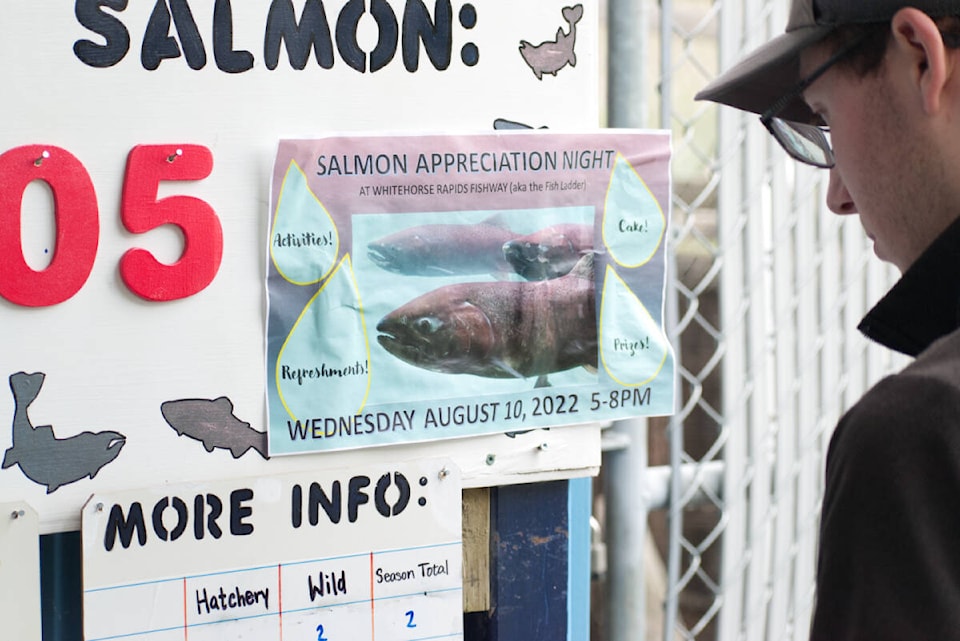Some experts in the Yukon are expressing increasing concern since only about one-quarter of the ideal number of chinook salmon have crossed into Canada via the Yukon River so far this year.
The 2022 chinook salmon season has been “by far the worst on record,” which is concerning for the chair of the Yukon Salmon Sub-Committee.
In a Sept. 6 interview, James MacDonald said a combination of factors could be contributing to the low count, from pollution and overfishing in the ocean to climate change.
“If fish managers aren’t concerned, they should be,” he said.
The Yukon River chinook salmon run is the longest run in the world at more than 2,000 kilometres.
The federal department of Fisheries and Oceans Canada’s manager of Yukon River operations, fisheries and treaties agreed that the counts themselves and the three-year trend are a growing cause for concern.
Marc Ross confirmed this year’s count is the lowest count on record since records started being tracked decades ago.
“There’s a number of salmon that we would like to see make it to the Canadian spawning grounds in order to ensure adequate spawning and success for future generations of fish,” Ross said.
Ross said the spawning escapement goal is between 42,500 and 55,000 chinook salmon, with the higher end of the range being more desirable.
That compares to the latest update on the number that have crossed into Canada: 12,025 chinook salmon.
READ MORE: Low chinook salmon count as Whitehorse fish ladder closes for season
Ross said the department is partnering with certain agencies in Alaska to look at influencing factors. He said they are working to understand the nature of the low counts by tracking the oceanic conditions.
The chinook salmon are counted in Alaska at the lower Yukon River, also known as the mouth of the river at a location known as the pilot station, and again near the international border in Eagle, Alaska.
An international treaty manages the salmon on the river.
Ross said the most recognized hypothesis for the decline in numbers is the increased temperature due to atmospheric conditions and global warming of the Bering Sea, where chinook salmon go until they reach maturity and migrate back.
The temperature of the Bering Sea needs to be hospitable because the fish spend the majority of their life at sea, he said.
Ross said the department is also working with Alaska to examine a secondary influencing factor: en route mortality.
Fish need to be healthy to make that long journey, he explained, so researchers are studying the fat content to see if fish have enough reserves, as well as a pathogen that may be peaking and compounding the issue of lower numbers in recent years.
He said the decreasing chinook salmon numbers has the biggest impact on Yukon First Nations who are losing that long-time reliance on the animal for sustenance, culture and ancestry.
In July, Tr’ondëk Hwëch’in and Vuntut Gwitchin First Nations asked their members not to harvest salmon on the heels of low numbers of chinook salmon making it back into the Yukon after running up the river from the distant west coast of Alaska.
READ MORE: Weak salmon run on Yukon River halts harvesting in First Nations
— With files from Jim Elliot
Contact Dana Hatherly at dana.hatherly@yukon-news.com
